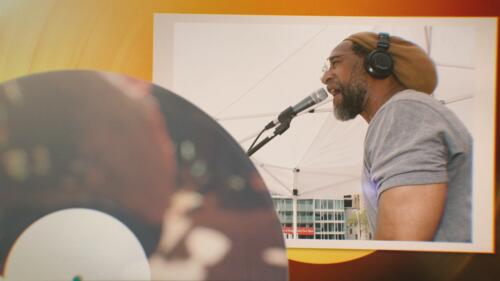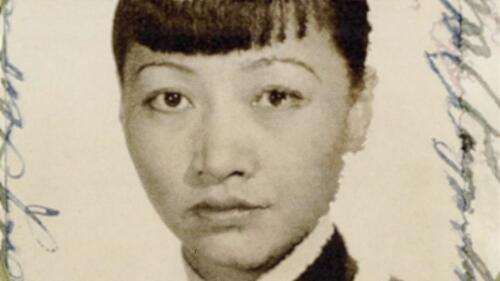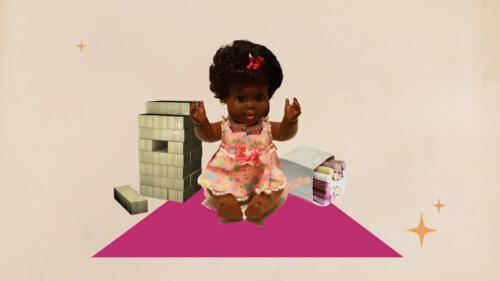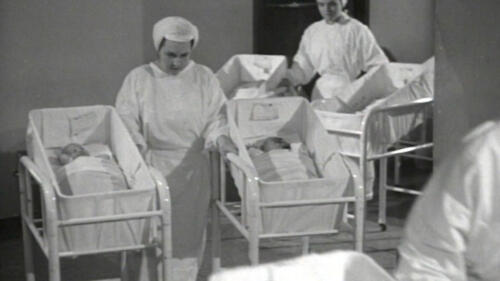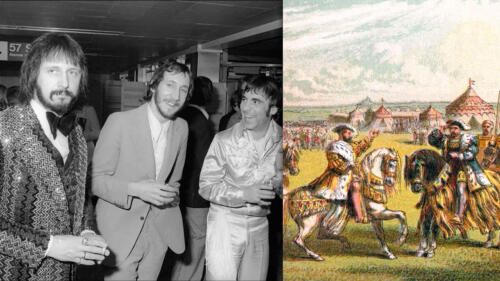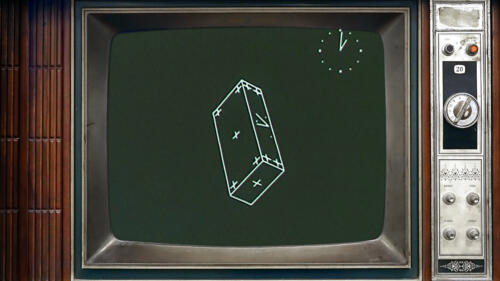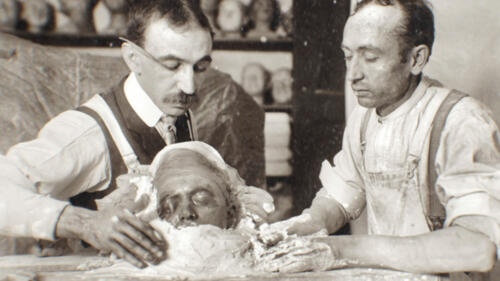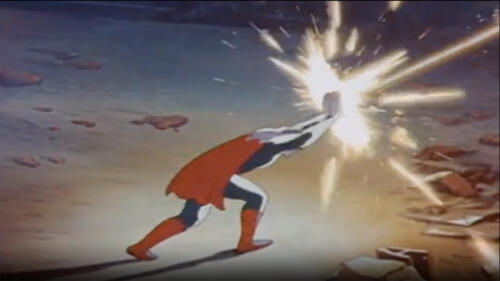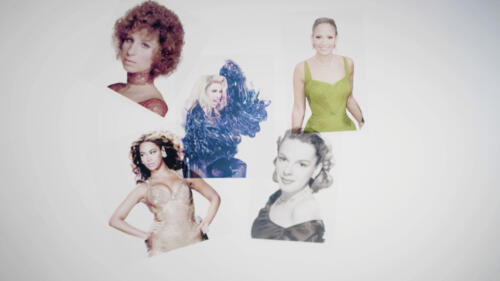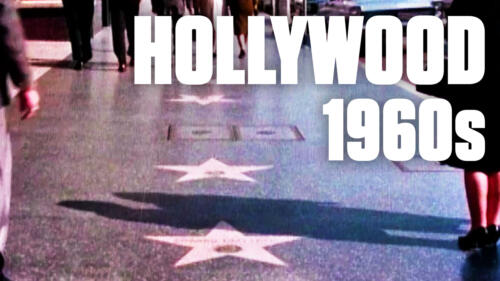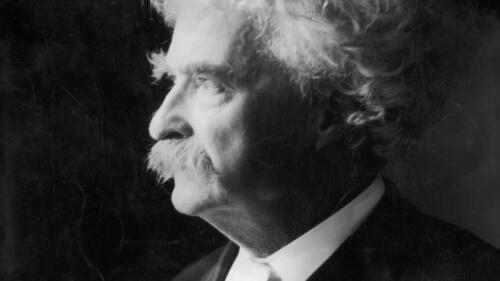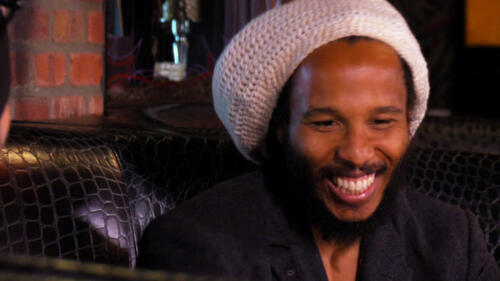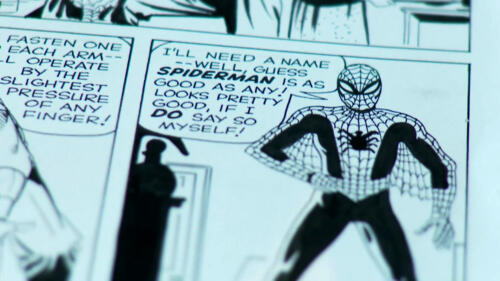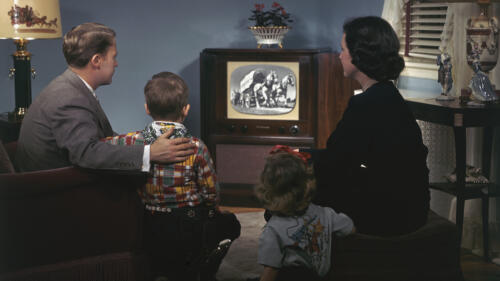Arts & Entertainment
The history of art and entertainment tells the complex story of human civilization through visual art, design, literature, music, film and television. It ranges from cave drawings of the Neolithic period to Renaissance masterpieces to rock 'n' roll and video games.

Start Here

These visual artists helped modernize and reclaim African American portrayals through groundbreaking painting, sculpture and photography.

When Afro-Cuban mambo met big band jazz, musical sparks flew.

Actors of East Asian descent often faced limited and typecast roles in Old Hollywood, but they paved the way for future generations.

As clothing became cheaper and faster to make amid the Industrial Revolution, new, sometimes outrageous fashion designs became chic.
Why Is Kubrick’s ‘2001: A Space Odyssey’ Significant?
Why Is Kubrick's '2001: A Space Odyssey' Significant?
Take a journey through the history of science fiction and examine the cultural influences such as the Vietnam War, the Civil Rights Movement, and space exploration, that influenced Stanley Kubrick's 1968 visionary film "2001: A Space Odyssey."
3 Controversial Artworks
Explore All Related Topics

The rise, fall and reinvention of Hollywood’s favorite gimmick.

When it came to presents, the King never did ordinary.

The folksy doll sparked shortages—and melées.

An FBI report suggested the beloved holiday film was subversive.

Compelling new reads for the history buff on your gift list.

As D&D enchanted imaginative youth, it also became a battleground for parents and pundits who feared its influence.

TV executives nearly pulled the plug on the first 'Peanuts' special.

Hollywood would not be the same without 'Breathless.'

All we have are a small handful of 16th-century records.

Hudson’s illness galvanized efforts to confront the AIDS crisis Hollywood had been ignoring.

L. Frank Baum’s original story never described her that way.

For rising stars, performing at the Opry is a rite of passage.

A famous pratfall helped 'The Dick Van Dyke Show' stumble its way into television history.

Fear of satanic cults and secret rituals swept the nation across music, media and even day care centers.

A comic strip joke turned into a real-life campus tradition.

Ono was a barrier-breaking artist and musician long before meeting John Lennon.

Romance and royalty are at the heart of this roughly 1,000-year-old psychological saga.

The best horror movies hold up a mirror to our collective fears and taboos.

Quiet Maine towns became King’s stage for national fears.

Terrifying clowns like Pennywise are way older than you might think.

Her televised tour brought the White House into American living rooms.

'The Man of a Thousand Faces' shocked viewers—and pioneered the art of movie makeup.

Nostalgic favorites like 'He-Man' and 'My Little Pony' began as product placement.

Heard of ‘6-7’? Here are nine other numbers from history that became shorthand for cultural phenomena.

James Dean, Natalie Wood and Sal Mineo embodied youthful defiance on screen—and left behind some of Hollywood’s most tragic legacies.

These are some of the monster's most memorable reincarnations.

When singing rats and bears became beloved mascots of ’80s and '90s childhoods.

The phrase that suggests a failure to pick up on social cues has been around for at least 50 years.

The Flying Ace symbolized hope and, ultimately, exasperation.

The cultural lineage of the glamorous showgirl stretches back to 19th-century Paris.

Mexico’s movie industry became a cultural powerhouse in the 1930s.

Two years before Alfred Hitchcock’s ‘The Birds’ debuted, frenzied seabirds swarmed a California beach town frequented by the director.

Behind the modern fairground of turkey legs and jousting knights is a 1960s vision of counterculture.

What began as a summer concert tour to support women in the music industry quickly grew into a cultural movement.

We have an actor to thank for the stereotypical voice, matey!

Physical media doesn't just play music—it shapes how we experience it.

Redford’s vision for the Sundance Film Festival and Institute began with a 1969 land purchase in the Utah mountains.

The answer lies in an over-the-top 18th-century fashion trend and a long-forgotten slang term.

The movie musical premiered 50 years ago. Here's how fishnets and fan rituals turned it into one of cinema’s longest-running cult hits.

Lucille became King's lifelong companion and muse.

It's been a symbol of power and prestige across centuries.

How much did Ian Fleming use his WWII experience to create 007?

Here’s how Sin City evolved through the decades.

They offered Londoners music, spectacle and social escape.

Laura Ingalls Wilder had a secret collaborator with Libertarian Party connections.

The 1975 breakthrough album channeled their heartache and hope.

The man who invented the Frisbee used to throw cake pans with his wife on the beach.

Orwell’s allegory didn’t make it to the screen exactly as he wrote it.

The world’s largest arts festival has married culture with chaos.

The scoop behind Carmel-by-the-Sea’s harsh law banning an ice cream shop—and the movie star mayor that brought it back.

These hard-hitting performances pulled no punches.

It's the core enigma of Orson Welles' movie masterpiece.

How four squabbling heroes helped launch the Marvel universe and usher in a new era for comics.

Billy Joel’s music offers a soundtrack to America’s changing landscape.

Not yet famous, he briefly popped up as a person of interest.

Its French inventor originally called it 'The Magic Screen.'

Keep your hands inside the vehicle as we steer you through the rickety ups and terrifying downhill drops of this classic thrill ride.

Many call Freddie Mercury's performance the greatest ever.

Part superhero, part supersalesman, he became a potent symbol.

The competition between the two bands led to some of the most forward-looking and influential music of all time.

The merry-go-round draws inspiration from medieval war games.

The DeLorean became a time machine with a 'flux capacitor.'

The Red Sox aren’t the only team to use Neil Diamond's song for energizing crowds.

Amusements included the license plate game, I Spy and Mad Libs.

It wasn't just a hit—it changed how Hollywood does business.

The pop sound of The Beach Boys blended Brian Wilson’s musical ambitions with the Californian dream.

Carole King, Neil Diamond and others churned out hit after hit.

No surprise: The list is studded with Broadway legends.

The man behind the first drive-in, opened in June 1933, was inspired by his tall mother who felt cramped in movie theater seats.

Early reels showed America’s most famous national parks in 3D.

Sessue Hayakawa was a sex symbol of the silent era.

The jewelry gave wearers the opportunity to track their feelings.

The Flaming Lips’ frontman in a bubble. Daft Punk’s pyramid perch. Tupac’s ‘hologram.’ Coachella’s most iconic sets didn’t just wow crowds—they changed what festivals could be.

It was originally designed to lift employee morale after a rocky corporate merger.

Denim jeans, a quintessentially American garment, has unexpected origins—two centuries before Levi Strauss was born.

Springsteen's breakout. Dylan's heartbreak. P-Funk's Mothership. From punk poetry to hot-and-heavy disco, 1975 had something for everyone.

In April 1896, Thomas Edison rented a New York Vaudeville hall to show a film—an event that many consider to be America's first movie theater experience.

The legendary singer-songwriter mixed folk and rock, and proved longer songs could become hits.

The iconic 1939 movie starring Judy Garland is among the most-watched in history, but even the biggest fans may not know these details.

While the 1897 novel 'Dracula' launched a genre of literature and film about vampires, a 1922 knock-off film cast the villain in a whole new light.

Callas became the most celebrated operatic soprano of the 20th century, but then her career—and life—were cut short.

Some of the earliest versions of socially acceptable women's pants were worn by women vacationing on the beach.

Wong started acting at age 14 and rose to fame, but as a Chinese American, landing leading roles was often a struggle.

The Disney animation team spent three years, $1.4 million—and nearly 2 million separate paintings—in making its first feature-length film.

Frank Herbert’s 1965 science fiction classic tackled ecological themes and predicted some real-world problems.

These visual artists helped modernize and reclaim African American portrayals through groundbreaking painting, sculpture and photography.

Marley hoped the star-studded concert, held in Kingston, Jamaica in 1978, could help bring stability and peace to a divided, violence-stricken country.

Ninjas were the ultimate espionage agents in Japan’s feudal skirmishes. Their air of mystery helped them infiltrate contemporary popular culture.

From how the kitchen was stocked, to who is buried on the grounds, explore facts about the estate that Priscilla Presley converted into a business.

Harlem offered the Black creative class pride—and possibility.

Some commencement ceremony traditions, like the cap and gown, have medieval origins; others developed more recently.

Genetic analysis of the composer's hair reveals a likely cause of death.

Hollywood blacklisted these screenwriters, producers and directors for refusing to testify before the House Un-American Activities Committee.

Humans have conceived versions of intelligent machines for centuries.

Despite the virulent racism of their time, these talented African American artists found success—and left lasting legacies.

The young New York graffiti artist and Pop Art icon produced more than 150 works together. Critics in the '80s panned them. Now, some sell for millions.

The poet and author of 'I Know Why the Caged Bird Sings' constantly tackled new roles, including streetcar conductor, dancer and journalist.

From Raggedy Ann to Barbie to Cabbage Patch Kids, these mass-produced playthings have delighted millions of children worldwide.

When Afro-Cuban mambo met big band jazz, musical sparks flew.

A fusion of global sounds shaped these musical styles.

These are some of the most surprising, and valuable, historical objects people have ever found by accident.

Actors of East Asian descent often faced limited and typecast roles in Old Hollywood, but they paved the way for future generations.

These writers were part of the larger cultural movement centered in New York City’s Harlem neighborhood and offered complex portraits of Black life in America.

What if the truth was a lot more complicated than we thought?

During the same summer as the legendary Woodstock music festival, the Harlem concert series featured major African American artists against a backdrop of massive social change.

Pioneering shows from the 1950s, like 'I Love Lucy,' would help shape the medium for decades to come.

Using fame as a cover, the glamorous entertainer spied for the French Resistance against the Nazis.

These shows helped broaden the range of African American experiences portrayed on television.

'I used to drink it,' the artist said. 'I used to have the same lunch every day for 20 years.'

Fort Knox empty? The disappearing White House cornerstone. America's version of Stonehenge. And Leonardo's missing notebook page.

From spirituals to ballads, funk and hip-hop, these songs have provided a soundtrack to the pride and struggle of African Americans through the centuries.

'Walk' among the terra cotta warriors. Tour Anne Frank's secret annex. Read letters to FDR. And more.

From jazz and blues to poetry and prose to dance and theater, the Harlem Renaissance of the early 20th century was electric with creative expression by African American artists.

Suicide? Murder? P.R. stunt? Marie Empress's 1919 disappearance from an ocean liner remains a total enigma.

The iconic music festival faced massive resistance from local residents who feared an invasion of long-haired druggies in August of 1969.

Some of the Golden Age of Hollywood's brightest stars were suspected to have been in "lavender" marriages—for the sake of their careers.

The Kim Sisters’ success in Las Vegas allowed their family in war-torn Korea to eat.

Blackface became popular in the U.S. after the Civil War as white performers played characters that demeaned and dehumanized African Americans.

These controversial artworks shocked the world.

Fredi Washington embraced her race at the height of Jim Crow.

Mickey Rooney's portrayal in 'Breakfast at Tiffany's' is often cited as offensive and a well-known example of yellowface.

Batwoman's arrival in 1956 wasn't just about spicing up Batman and Robin’s routine.

D.W. Griffith’s controversial epic 1915 film about the Civil War and Reconstruction depicted the Ku Klux Klan as valiant saviors of a post-war South ravaged by Northern carpetbaggers and freed Black people.

The recordings, which became a national phenomenon, captured artists like Bessie Smith and Louis Armstrong—but most artists were exploited and forgotten.

A government inquest concluded the martial-arts movie icon died from an aspirin allergy. That doesn't fit the facts.

The late Kim wanted Choi Eun-hee and her director ex-husband to improve North Korean cinema.

Extreme close-ups. Fast-motion reverse shots. And flesh-stabbing sound effects made with a knife and a casaba melon.

Nuclear war and race relations weren't the usual kiddie-show fodder, but they made their way into the safe space of 'Mister Rogers' Neighborhood.'

Hollywood’s Humble Origins In 1853, a small adobe hut was all that existed where Hollywood stands today. But over the next two decades, the area became a thriving agricultural community called Cahuenga Valley. When politician and real estate developer H...

Little known facts about the astronomical life of author, cosmologist and physicist Stephen Hawking.

Many memorable performances were fueled by “pep pills.”

Here’s why three famous winners didn’t take their Oscars home.

An art lover’s guide to travel.

If popular folklore is to be believed, he's a tattooed former military sniper with a dark secret.

Marvel's groundbreaking superhero emerged in the 1960s—during the height of the civil rights movement.

Female extras and dancers were often lured to parties under false pretenses.

How eight lucky people found work by famous artists.

Television brought film into people’s homes—but flattened Hollywood.

Though the novelist—born 250 years ago—published six classic novels about love, she never married. Not that she didn’t get the chance.

The country once taxed the number of windows people had—in effect, making them pay to breathe.

'King Cohn' lived up to his despicable reputation.

Biloxi, Mississippi, will remove the book from school curriculums.

As the musical celebrates its 60th anniversary, it stands as more than art: It was an artistic confrontation of social issues from immigration to economic inequality to gang violence.

Surrealism, an artistic movement that formed in the early 20th century, has had a lasting impact on painting, sculpture, literature, photography and film.

Art Nouveau showcased curvaceous lines in visual arts and design, before the streamlined style of Art Deco flourished in displays of architecture and fashion.

Richard Hornberger was famous for his wisecracking characters, but his real accomplishments were as a surgeon.

Modernism was a movement in the arts that lasted from the late 19th century to the middle of the 20th century.

Does the King still hold appeal for a younger generation?

Bauhaus was an influential art and design movement in early 20th century Germany that championed a geometric, abstract style with no historical nods.

Car chases. Drag races. Spy maneuvers and more. The film world has long had a love affair with its four-wheeled stars.

Impressionism, an art movement that emerged in France in the mid- to late 1800s, emphasized plein air painting and new expressions of light and color.

Ian Fleming’s cunning action hero reflected the (former) glories of imperial Britain.

Cubism is an abstract artistic movement created by Pablo Picasso and Georges Braque in the early 1900s that influenced other forms of art, music and literature.

The cartoon vixen was an unlikely candidate for a lawsuit—and for popularity.

The midcentury TV show traded big prizes for women’s sob stories—and predicted the reality shows of today.

Check out 10 of history’s most fashionable world leaders.

After the colossal success of “Invisible Man,” Ralph Ellison struggled for 40 years to finish his second novel, “Juneteenth.”

The effect a Tony Award has on a Broadway production is similar to what an Oscar can do for a Hollywood film. It’s the industry’s highest honor and can make or break a play when it is given—or not. Although it may seem like a mainstay now, the Antoinette Perry Award for Excellence in Broadway […]

MTV made waves when Emma Watson was awarded a non-gender specific “Best Actor” award for her performance in “Beauty and the Beast.” But while this may be a first for the MTV Movie & TV Awards, it’s not a first for the entertainment industry. For the top honors in film and theater, awards have always […]

Get the history behind the Comics Code Authority and how it kept some characters out of mainstream superhero stories for more than three decades.

Hemingway, America’s best-known novelist and one of the most famous figures in the history of literature, had a secret espionage past.

When the daguerreotype—the proto-photo—was first popularized in 1839, French poet and critic Charles Baudelaire railed against the form, calling it “deplorable.” And in the 178 years since its invention, the camera—and photographers—have courted controversy and headlines in equal measure. Here are the 10 most controversial moments in the history of the camera: 1. Death on […]

Meet eight Muppet characters who've helped kids—and adults—learn some powerful life lessons.

From Bette vs. Joan to the ultimate sibling rivalry, check out these legendary Hollywood battles.

Have you heard of these groundbreaking LGBT characters?

Get the facts on eight of the most magnificent libraries of the ancient world.

Referring to someone as a “Horatio Alger hero” means that person has overcome adversity and achieved success thanks to hard work and perseverance. The term is linked to the fictional stories of real-life, 19th-century author Horatio Alger Jr., who penned tales about street children who managed to better their circumstances through a combination of factors […]

The late-night television show rescued the game from being branded as too risqué—and made it a pop culture sensation.

A real-life black bear owned by a Canadian soldier serving in World War I inspired the famous children’s book.

These classic works of literature ran afoul of government censors.

Read about Roald Dahl’s secret life befriending presidents and bedding socialites as part of a British spy ring in the United States.

In 1911, a former Louvre employee perpetrated one of the greatest art heists in history.

Check out nine little-known facts about the jazz legend nicknamed “Satchmo.”

From an Oscar-winning scriptwriter to a hardboiled detective novelist.

Find out how these three priceless objects were recovered and learn how stolen items associated with Walt Whitman and King Croesus also have happy endings.

From Drake’s Plate of Brass to the Archaeoraptor fossil, explore seven fascinating historical hoaxes.

Going back in time—to play a famous man or woman from history—was the ticket to Oscar gold for these nine men and women.

Forty years after the premiere of “Roots” captivated the nation, take a look back at the cultural phenomenon and its lasting legacy.

Explore 10 surprising facts about history’s most influential magician.

Check out five surprising facts about the author of 'War and Peace' and 'Anna Karenina.'

From Queen Victoria’s favorite lion tamer to a doomed aerialist, step right up and meet eight of the most beloved and influential stars of the big top.

Who was the woman behind the world’s most famous whodunits?

Check out eight whiz kids who made their mark on history.

Historical figures and events informed George Lucas as he created his sci-fi saga in a galaxy far, far away.

Widely acclaimed as the first movie star, Florence Lawrence was the first film actress whose name was used to promote her films.

Lewis Carroll’s 1865 novel “Alice’s Adventures in Wonderland” famously features an eccentric character called the Hatter, who’s referred to in the story as “mad” and became popularly known as the Mad Hatter. However, the phrase “mad as a hatter,” used to describe someone who’s crazy or prone to unpredictable behavior, didn’t originate with Carroll. Instead, […]

The origins of “in the limelight,” which refers to being the focus of public attention, are linked to a type of stage lighting that was popular in the 19th century. The “lime” in limelight has nothing to do with the green citrus fruit but rather with a chemical compound, calcium oxide, also known as quicklime. […]

Stories of killer whales have circulated on the high seas for generations.

The famed writer died suddenly—and under strange circumstances.

Get the facts about the famous comic strip and its creator.

Get the facts on the actor who epitomized coolness and youthful angst.

Find out more about the Dutch-born painter, including what he did before becoming an artist, the unusual place where he painted some of his best-known works and why he might not have been responsible for cutting off his own ear.

From the development of his massive Spruce Goose aircraft to his involvement in a top-secret CIA plot to recover a Soviet sub, get the facts about the eccentric billionaire.

Check out 10 surprising facts about the 19th century’s most legendary showman

Explore the story of this literary classic and its author, L. Frank Baum, whose jobs ranged from chicken breeder to frontier storekeeper before he struck literary gold in 1900.

Explore the true history behind one of the most popular films of all time, “The Sound of Music.”

From the business setback that spurred him to develop Mickey Mouse to that persistent cryogenics myth, discover seven fascinating facts about this entertainment legend.

It's one of the rarest and most influential books in world history. But was it the first?

From Martin Luther King’s immortal jailhouse letter to a classic of philosophy completed on death row, get the facts on eight of the most influential and incendiary works written from behind bars.

From Charles Dickens’ obsession with order to a Greek politician’s bizarre trick for avoiding procrastination, learn more about eight historical figures that had unorthodox methods for getting things done.

Check out eight fascinating facts about the world-famous author, including why his riverboat career was marred by tragedy and who served as the real-life model for Huck Finn.

Take a look back at the Lumière brothers and their groundbreaking invention, the Cinématographe.

Check out nine surprising facts about the man known as the big screen’s “Master of Suspense.”

Sir Arthur Conan Doyle’s fictional detective with the knack for solving crimes through observation and reason was modeled after Dr. Joseph Bell, one of Conan Doyle’s medical school professors. Conan Doyle, born in Scotland in 1859, studied medicine at the University of Edinburgh and went on to work as a physician in England while writing […]

Explore 10 surprising facts about the famed American novelist.

From his challenging childhood to his stolen coffin, the silent film star's story was anything but ordinary.

Explore eight surprising facts about the Man of Steel.

Read the incredible tale of Marcus Luttrell and his fellow Navy SEALs that is the basis for the film.

Find out more about the extraordinary circumstances of seven of history’s most unlikely friendships.

The 26-second snippet of JFK's assassination became a major piece of evidence for government investigators and conspiracy theorists alike.

Orson Welles' 1938 program is the most famous—and dramatic—broadcast in radio history.

Check out six sinister themes in his work you likely wouldn’t find in a modern-day children’s story.

Check out some surprising facts about the world-famous museum and its long history.

From a Russian national treasure looted by the Nazis to a da Vinci painting that no one has ever seen, find out more about eight of art history’s missing masterworks.

Explore some surprising facts about this famed symbol of the U.S. movie industry.

Thirty years after the Hitler Diaries were exposed as a fraud, here’s a look back at some of history’s other famous fictions.

Find out more about the unusual origin stories behind 10 everyday phrases.

Check out seven surprising facts about the prolific and influential artist.

The Nobel Prizes, awarded annually on the anniversary of founder Alfred Nobel’s death, remain some of the most prestigious awards in the world.

The famous children's book author and illustrator

Explore seven fascinating facts about the English novelist and his extraordinary life.

William Shakespeare (1564-1616), considered the greatest English-speaking writer in history and England’s national poet, has had more theatrical works performed than any other playwright.

From Thomas Edison to MTV, the music video's long history.

October 4 marks 55 years since Janis Joplin died of a heroin overdose. She's one of a tragically long list of musicians who died at 27.

Mark Twain, the pseudonym of Samuel Clemens, was an American writer and humorist known for his travelogues and books such as The Adventures of Tom Sawyer.

The Hollywood Ten were film professionals who denounced the House Un-American Activities Committee in 1947, resulting in their blacklisting from the industry.

The Harlem Renaissance marked a golden age in Black culture.




